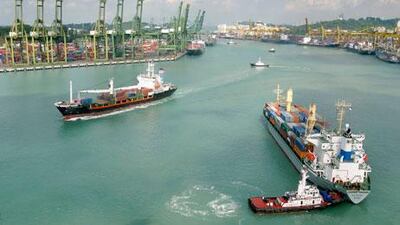Transport strategy is what makes Singapore tick commercially, both in terms of relations with the outside world and in enabling citizens of the crowded island to go about their daily business.
Vision 2030: More on Abu Dhabi's model economies
An island of inspiration helps fuel Abu Dhabi's ambition Singapore is the only Asian model among four that the architects of the capital's Economic Vision 2030 are looking to, Frank Kane reports. Read article
A leading global thinker urges emirate to look east for answers Along with tiger balm and noodles, Professor Kishore Mahbubani is one of Singapore's better known exports, though he has never moved permanently from the city. read article
Singapore can teach capital useful lessons in how to develop as a major financial The financial sector in Singapore has made great strides to become the leading centre for South East Asia, and is challenging Hong Kong as the most important financial location in east Asia. Read article
Lion city sheds its shackles at night Singapore is one of the main business centres in South East Asia. The city state is also an ideal place for the business traveller to put his feet up. Read article
The airport complex at Changi, based around the operations of Singapore Airlines, the national flag carrier, is a centre for freight and passenger traffic for the whole of South East Asia and beyond.
The seaport is one of the busiest in the world, contesting the top slot with Shanghai and Hong Kong. It is run by PSA International, a full owned subsidiary of Temasek Holdings, which also operates 29 other ports in 17 countries around the world. It is Singapore's equivalent of Dubai's DP World.
With one of the highest population densities in the world, Singapore has had to plan carefully to ensure the workforce can travel from the primarily residential north of the island to the commercial and industrial south on a daily basis.
"The basic concept plan was mapped out in the early 1970s, in cooperation with the urban development authority and the economic development board," says Bili Yang, the senior policy executive of the ministry of transport. "We have pretty much stuck to that, with regular reviews."
The rail system, a combination of the mass rapid transit and light rail transit networks, runs for a total length of 160km and further extensions are being planned to take the total to 278km by 2020.
The island's road system presented the planners with biggest challenge. With a population of about 5 million and one of the highest standards of living in the world, private car usage had to be contained, and here the benefits of the "command economy" came in.
New car ownership is strictly rationed by a system of open bidding via the internet twice a month, with a 1.5 per cent annual growth limit put on the total number.
At the same time, road usage is also controlled. The first congestion charge was introduced in 1975, and the system has been fully automated since 1998. The average charge for use of the Central Expressway is S$8 (Dh24.15) per trip, with a further charge for access to the central business district.
* Frank Kane

